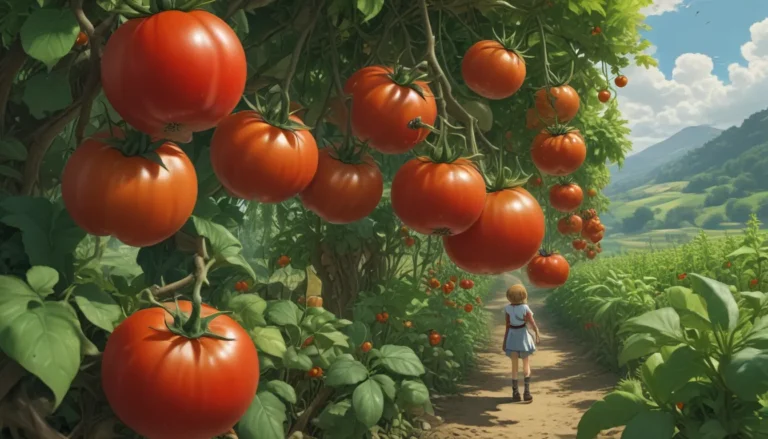Understanding Late Blight of Tomatoes: Identification and Prevention

Late blight is a significant threat to tomatoes and potatoes, with the potential to devastate entire fields and gardens. Phytophthora infestans, the organism responsible for late blight, is also known as a water mold due to its preference for wet conditions. First recognized during the Irish potato famine of the 1840s, late blight is a terminal disease that requires early identification for effective containment and prevention.
In this comprehensive guide, we will delve into the critical aspects of late blight, covering essential topics like its severity, conditions favoring its growth, identification techniques, management strategies, and preventive measures. By understanding the lifecycle of the late blight pathogen and adopting proactive gardening practices, you can safeguard your tomatoes and potatoes from this destructive disease.
Why Late Blight Is a Significant Threat
Late blight poses a severe threat to both tomatoes and potatoes due to the various strains of the pathogen capable of infecting these crops. Once introduced into the garden, the pathogen can spread rapidly through spores produced under wet and humid conditions. These spores can travel long distances and infect plants on a large scale, causing extensive damage within a short period.
The destructive nature of the late blight pathogen highlights the importance of early identification and swift action to prevent widespread infection. By recognizing the symptoms and signs of late blight, gardeners can take proactive measures to protect their plants and neighboring crops from this devastating disease.
Conditions Favoring Late Blight
Late blight thrives in humid environments with temperatures ranging between 60 to 68°F. High humidity levels above 90 percent provide an ideal breeding ground for the pathogen, allowing spores to infect plants within hours. These spores can travel through the air, spreading infection over long distances, particularly in cloudy conditions.
While late blight may develop more slowly in warm, wet weather with sporadic dry spells, the disease can still progress rapidly, causing extensive damage in a matter of days. Hot and dry conditions can help limit the spread of late blight, offering some relief from the rapid infection rate under suitable weather conditions.
Identifying Late Blight on Tomato Plants
Late blight typically occurs later in the season, following blooming stages, and manifests as small water-soaked lesions on the leaves. These lesions quickly expand into irregular purple-brown blotches with green-gray edges. Under optimal conditions, the pathogen produces grayish-white fungal threads with spore-producing structures around the lesions, leading to the rapid deterioration of affected plant parts.
Monitoring the underside of leaves, petioles, and young stems can help identify the spread of late blight within the plant. Fruit may also display symptoms, starting with oily-looking spots on the shoulders and progressing to brown patches that turn leathery over time. Prompt detection of late blight symptoms is critical in limiting the infection’s spread and protecting neighboring plants from contamination.
Scout Your Garden for Disease
Regular scouting of the garden for late blight symptoms is essential, particularly during wet weather periods. Pay close attention to low-lying areas, densely planted crops, and sites adjacent to wooded areas or hedgerows. Early identification of late blight in specific garden locations can help prevent widespread infection and facilitate timely intervention measures to contain the disease.
Utilize resources such as USABlight, an online portal for disease monitoring and reporting, to stay informed of late blight occurrences in your local area. Reporting disease incidents and seeking expert advice from county extension agents can enhance the effectiveness of your management strategies and help protect your garden from late blight outbreaks.
Managing Late Blight Infections
While resistant tomato varieties offer some protection against late blight, the pathogen’s continuous evolution threatens the effectiveness of such cultivars. In cases of severe late blight infections, removing and destroying affected plants promptly is crucial to prevent further spread of the disease. Proper disposal on dry, sunny days can help contain spore dissemination and reduce the risk of infection spread to neighboring crops.
Besides adopting resistant tomato varieties, supplementing with fungicide treatments may help manage minor late blight infections, especially during favorable weather conditions. Consult with local extension agents to determine suitable fungicides for late blight control in your area and implement preventive spraying practices to limit disease progression.
Preventing Late Blight Outbreaks
Prevention is key to safeguarding your garden from late blight and minimizing the risk of infection in tomatoes and potatoes. Adopting proactive measures such as removing volunteer plants, inspecting starts for disease symptoms, and practicing targeted watering techniques can help reduce the likelihood of late blight outbreaks in your garden. Additionally, maintaining proper spacing between plants, promoting adequate airflow, and removing lower foliage can enhance plant health and resilience against fungal diseases.
Fungicide applications are recommended for early symptom alleviation, but bear in mind that late blight has no cure, emphasizing the importance of preventive strategies in disease management. Employ low-dose, frequent fungicide spraying practices to maximize effectiveness and prevent resistance development in late blight strains. Rotate fungicides or combine treatments as advised by extension experts to maintain the efficacy of control measures over time.
The sexual reproduction phase of the late blight pathogen plays a pivotal role in generating new aggressive strains resistant to fungicides. Vigilance in monitoring disease outbreaks, adopting disease-resistant cultivars, and implementing sound gardening practices can mitigate the impact of evolving late blight strains and safeguard tomato and potato crops from widespread infections.
In conclusion, late blight is a critical threat to tomato and potato crops, necessitating proactive disease management and prevention efforts to mitigate its detrimental effects. By staying informed about late blight symptoms, employing early identification measures, and implementing preventive strategies, gardeners can protect their plants and reduce the risk of infection in their gardens.
Have you encountered late blight in your garden? Share your experiences in the comments to contribute to our collective knowledge on late blight management. For more insights on tomato diseases and physiological disorders, explore our guides on common tomato diseases, blossom-end rot prevention, and tomato big bud disease.
By incorporating additional sections, expanding on existing content, and enhancing readability through varied formatting, this rewritten article offers an insightful and comprehensive guide to identifying and preventing late blight of tomatoes. Readers can now delve into the intricate details of late blight management with a conversational tone and valuable information tailored for their gardening needs.





